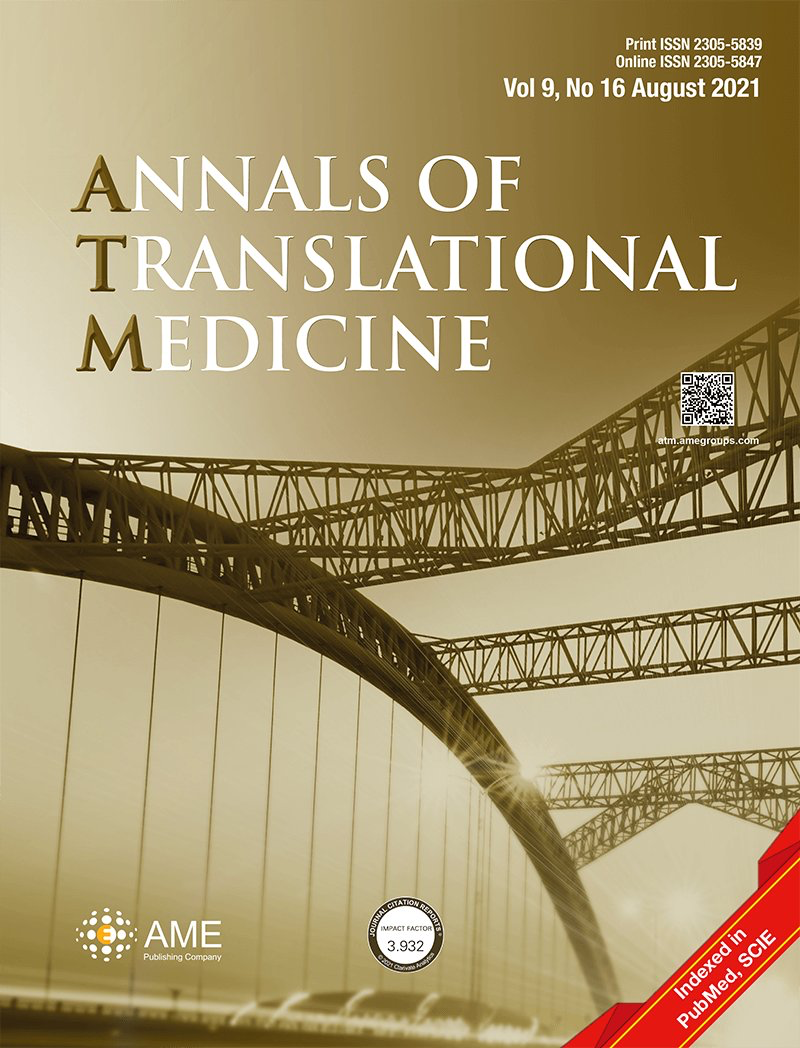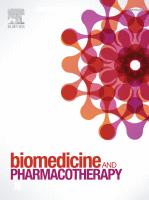Shu Di Huang
How to submit an article:
- Registered users can submit any published journal article that has a unique DOI (Digital Object Identifier) name or link to Research Hub.
- For example, you can paste the full DOI link:
https://doi.org/10.1109/5.771073or just the DOI name:10.1109/5.771073into the field above and click submit. - The person who is first to submit a valid article to Research Hub will forever be credited for it, and every article submission earns you +6 Research Points.
Also known as: Radix Rehmanniae Praeparata
Published research studies are articles that present the findings of original research that has undergone a peer-review process and has been made publicly available in scholarly journals, books or other media.

Mechanism and ingredients prediction of Radix Salviae-Angelicae Sinensis Radix-Lycii Fructus-Rehmanniae Radix Praeparata-Ginkgo Folium for retinitis pigmentosa therapy using network pharmacology and molecular docking analysis
2023 Oct Annals of Translational Medicine Wu J, Sun Z, Zhang D, Liu H, Wu J, Zhang S
Network Pharmacology Shu Di Huang Goji Berry Dang Gui Retinitis PigmentosaThe research unveils luteolin, quercetin, and kaempferol in RALRG as promising complementary components for RP treatment, with a key role in managing oxidative stress and PI3K/AKT signaling pathways.

Protective effect of ZYMT, a traditional Chinese patent medicine in a mouse model of retinitis pigmentosa
2023 Jun Biomedicine & Pharmacotherapy Huang Z, Huang Q, Xu K, Liang L, Li Y, Zhou W, et al.
Experimental Study Animal Study Dang Shen Shu Di Huang Huang Qi Ge Gen Goji Berry Zhang Yan Ming Tablets Retinitis PigmentosaZhangyanming Tablets show potential as a protective agent for retinal function in early-stage, genetically-caused blindness in mice, possibly due to their antioxidant and anti-/pro-apoptotic properties.

Elucidation of the Effects of Si-Wu Tang on Menstrual Disorder Patterns through Activation of Aromatase and Antioxidation
2022 Jan Frontiers in Pharmacology Guan-Cheng Huang, Yi-Zhe Tsai, Chia-Jung Lee, Heng-Yu Chang, Ching-Chiung Wang
Experimental Study Shao Yao Si Wu Tang Oestradiol Shu Di HuangSi Wu Tang has improved menstrual symptoms by increasing estradiol content and antioxidative effects as a result of its herbs' synergistic relationships.

Elucidation of the Effects of Si-Wu Tang on Menstrual Disorder Patterns through Activation of Aromatase and Antioxidation
2019 Mar 05 Evidence-Based Complementary and Alternative Medicine Huang GC, Tsai YZ, Lee CJ, Chang HY, Wang CC
In this study, we recommend that if the ratio of Shu Di Huang and Shao Yao should be increased, the function of SWT will be more forceful against menstrual disorder patterns through activating aromatase and antioxidative properties.
Network Pharmacology Si Wu TangResearch insights are moderated by the Research Hub team and offer an at-a-glance overview of interesting research findings.

2023 Annals of Translational Medicine
The research unveils luteolin, quercetin, and kaempferol in RALRG as promising complementary components for RP treatment, with a key role in managing oxidative stress and PI3K/AKT signaling pathways.
Network Pharmacology Dang Gui Goji Berry Retinitis Pigmentosa
Mechanism and ingredients prediction of Radix Salviae-Angelicae Sinensis Radix-Lycii Fructus-Rehmanniae Radix Praeparata-Ginkgo Folium for retinitis pigmentosa therapy using network pharmacology and molecular docking analysis
Wu J, Sun Z, Zhang D, Liu H, Wu J, Zhang S

2023 Biomedicine & Pharmacotherapy
Zhangyanming Tablets show potential as a protective agent for retinal function in early-stage, genetically-caused blindness in mice, possibly due to their antioxidant and anti-/pro-apoptotic properties.
Experimental Study Dang Shen Ge Gen Goji Berry Huang Qi Retinitis Pigmentosa
Protective effect of ZYMT, a traditional Chinese patent medicine in a mouse model of retinitis pigmentosa
Huang Z, Huang Q, Xu K, Liang L, Li Y, Zhou W, et al.

2022 Frontiers in Pharmacology
Si Wu Tang has improved menstrual symptoms by increasing estradiol content and antioxidative effects as a result of its herbs' synergistic relationships.
Experimental Study Oestradiol Shao Yao Si Wu Tang
Elucidation of the Effects of Si-Wu Tang on Menstrual Disorder Patterns through Activation of Aromatase and Antioxidation
Guan-Cheng Huang, Yi-Zhe Tsai, Chia-Jung Lee, Heng-Yu Chang, Ching-Chiung Wang
Review Articles
Review articles summarise and critically evaluate the current state of research on a specific topic or field by synthesising multiple primary research studies.
Clinical Trials
Clinical trials are research studies that involve people and are conducted to evaluate the safety and efficacy of new treatments or interventions, such as drugs, medical devices, or behavioural therapies.
Study Protocols
Published study protocols are detailed plans that outline the objectives, methodology, statistical analyses, and organisation of a research study that have been made publicly available for others to review and use as a reference.
Presentation Slides

Network Pharmacology
The research unveils luteolin, quercetin, and kaempferol in RALRG as promising complementary components for RP treatment, with a key role in managing oxidative stress and PI3K/AKT signaling pathways.
Wu J, Sun Z, Zhang D, Liu H, Wu J, Zhang S

Experimental Study
Zhangyanming Tablets show potential as a protective agent for retinal function in early-stage, genetically-caused blindness in mice, possibly due to their antioxidant and anti-/pro-apoptotic properties.
Huang Z, Huang Q, Xu K, Liang L, Li Y, Zhou W, Ning N, Zhou J, Hu J, Liu S, Dang L

Experimental Study
Si Wu Tang has improved menstrual symptoms by increasing estradiol content and antioxidative effects as a result of its herbs' synergistic relationships.
Guan-Cheng Huang, Yi-Zhe Tsai, Chia-Jung Lee, Heng-Yu Chang, Ching-Chiung Wang
Executive Summary
Write an executive summary in the form of a blog article on the topic of "Research into Chinese medicine treatment for Shu Di Huang" summarising the research below and using language that can be easily understood by patients and avoiding medical jargon using a professional and caring tone of voice.
Write an executive summary in the form of a blog article on the topic of "Researched Chinese medicine treatments for Shu Di Huang" summarising the research below in an objective and easy to understand way, and using language that can be easily understood by patients. Group the article into Chinese medicine treatments first, followed by nutrition and other treatments. Avoid using medical jargon and use a professional and caring tone of voice.
Write me a concise but easy to understand executive summary on the topic of "Chinese medicine treatments for Shu Di Huang" based on the following research that I will give you. Your summary should be 2 paragraphs long in Australian English spelling and include references to the studies.
A Network Pharmacology published in 2023 in the journal Annals of Translational Medicine found that The research unveils luteolin, quercetin, and kaempferol in RALRG as promising complementary components for RP treatment, with a key role in managing oxidative stress and PI3K/AKT signaling pathways. The research used various databases such as Traditional Chinese Medicine Systems Pharmacology Database and Analysis Platform, GeneCards, and the Online Mendelian Inheritance in Man database to gather the ingredients of RALRG and potential targets of RP and RALRG. A protein-protein interaction network was constructed to visualize these interactions. The R program was utilized to perform functional enrichment. The researchers constructed a visual RALRG-RP-pathway pharmacology network using Cytoscape 3.9.1 and applied molecular docking to compute binding affinity. The research revealed a total of 132 effective active elements in RALRG correlating to 248 target genes. Ninety-two intersection target genes were discovered from the overlap of RP- and RALRG-related genes. These intersection targets were discovered to be primarily involved in oxidative stress, responding to metal ions, and handling chemical stress. Several molecular pathways such as PI3K-AKT and MAPK were identified as closely connected to RP therapy. A potential pharmacology network was designed for the RALRG-RP-pathway with AKT1 and JUN being considered the main targets. The active ingredients luteolin, quercetin, and kaempferol were highlighted as crucial for this mechanism. RALRG overall was established as a main regulator for oxidative stress and PI3K/AKT signaling pathways in the treatment of RP.
A Experimental Study published in 2023 in the journal Biomedicine & Pharmacotherapy found that Zhangyanming Tablets show potential as a protective agent for retinal function in early-stage, genetically-caused blindness in mice, possibly due to their antioxidant and anti-/pro-apoptotic properties. Eighty mice with Retinitis Pigmentosa (RP) were divided into two groups, with one group receiving Zhangyanming Tablets (ZYMT) and a control group getting distilled water. After a period of 7 and 14 days, the researchers conducted tests through electroretinogram, fundus photography, and histological examination to assess the retinal function and structure of the subjects. They furthered the study using TUNEL, immunofluorescence and qPCR to evaluate cell apoptosis and the expressions of particular genes. The ZYMT-treated mice displayed a notable enhancement in retinal reactions and overall preservation of retinal structure when compared to the control group. Particularly noticeable were increases in retinal thickness and cell count, alongside a significantly lowered rate of cell death. A comprehensive follow-up shows the altered expressions of several genes in the retina following the application of ZYMT. These results, combined, suggest a key role of ZYMT in mitigating the effects of RP especially in early stages.
A Experimental Study published in 2022 in the journal Frontiers in Pharmacology found that Si Wu Tang has improved menstrual symptoms by increasing estradiol content and antioxidative effects as a result of its herbs' synergistic relationships. In the methodology of the study, a testosterone-treated MCF-7 cell model was employed to determine the effects of each herb in the SWT formula. Key metrics that were considered included the regulation of estradiol, antioxidative effects, and the total polyphenol and polysaccharide contents as quality markers. The study also explored the potential ability of certain elements within the formula to act as an aromatase promoter, notably catalpol and other elements. In terms of results, certain herbs in SWT such as catalpol showed an ability to significantly increase estradiol content and boost upregulation in cell culture, indicating their role as potential aromatase promoters within the formula. Antioxidant activity was also strong in other compounds like pentagalloylglucose, gallic acid, and ferulic acid. These antioxidative effects were attributed to the presence of polyphenols in the herbs. Furthermore, the herb with the strongest antioxidant effects could possibly help ameliorate menstrual disorder patterns due to its ability to prevent ROS damage to the ovaries.
Moderation Tools
Topic
Sign In
Users not signed in are limited to viewing the 5 most recent items of content.
Zhangyanming Tablets (ZYMT) has been in clinical use for almost 4 decades. The main components of this medicine include Fructus Lycii (wolfberry), Radix Codonopsis, Radix Astragali, Radix Puerariae Lobatae, Radix Rehmanniae Praeparata and so on. —Jinnan C 25 Apr 2024